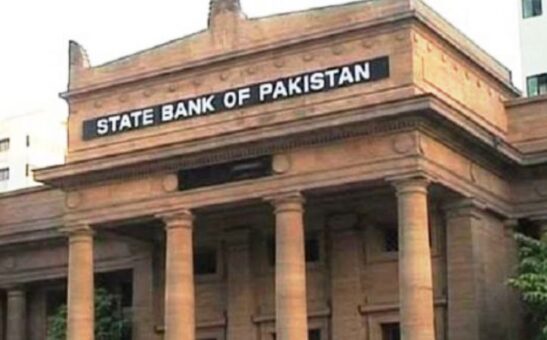KARACHI – The State Bank of Pakistan (SBP) has unveiled the foreign exchange rates for October 19, 2022, providing a snapshot of the value of the Pakistani Rupee (PKR) against major international currencies.
These rates, determined on the basis of the weighted average rates of commercial banks, are crucial for businesses, investors, and individuals involved in cross-border transactions.
As of October 19, 2022, the buying and selling rates for select foreign currencies in PKR are as follows:
• UAE Dirham (AED):
• Buying: 60.1470 PKR
• Selling: 60.2547 PKR
• Australian Dollar (AUD):
• Buying: 139.0819 PKR
• Selling: 139.3360 PKR
• Canadian Dollar (CAD):
• Buying: 160.4788 PKR
• Selling: 160.7704 PKR
• Swiss Franc (CHF):
• Buying: 221.3663 PKR
• Selling: 221.7721 PKR
• Chinese Yuan (CNY):
• Buying: 30.5800 PKR
• Selling: 30.6312 PKR
• Euro (EUR):
• Buying: 217.0641 PKR
• Selling: 217.4743 PKR
• UK Pound (GBP):
• Buying: 249.3243 PKR
• Selling: 249.7927 PKR
• Japanese Yen (JPY):
• Buying: 1.4778 PKR
• Selling: 1.4805 PKR
• Saudi Riyal (SAR):
• Buying: 58.7703 PKR
• Selling: 58.8793 PKR
• US Dollar (USD):
• Buying: 220.7676 PKR
• Selling: 221.1837 PKR
The exchange rates serve as a critical indicator for the economic health of the country, impacting trade, investments, and financial markets. The USD to PKR exchange rate, a key benchmark for international transactions, stands at 220.7676 PKR for buying and 221.1837 PKR for selling on this specific date.
Fluctuations in exchange rates have widespread implications for various sectors of the economy. A stronger PKR may make imports more affordable but could present challenges for exporters. Conversely, a weaker PKR might boost exports but may increase the cost of imported goods.
The SBP’s regular updates on exchange rates contribute to the transparency of the foreign exchange market, allowing businesses and investors to make well-informed decisions. Central banks, including the SBP, often intervene in the foreign exchange market to stabilize their national currencies and ensure economic stability.
Economic analysts will closely scrutinize these rates to discern trends, potential impacts on the domestic economy, and offer insights into the broader economic landscape. As the global economic environment continues to evolve, the SBP’s timely and accurate information on foreign exchange rates remains vital for navigating the complexities of international finance and trade.
